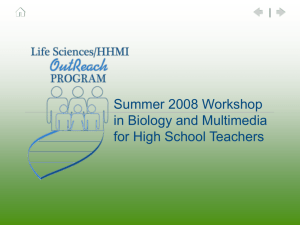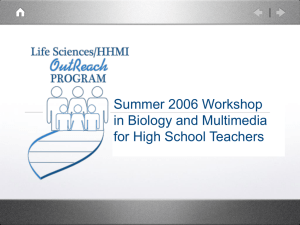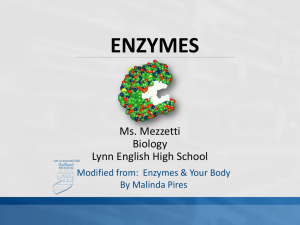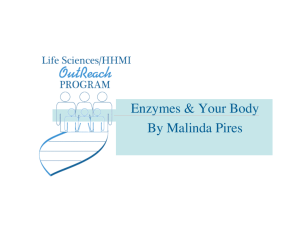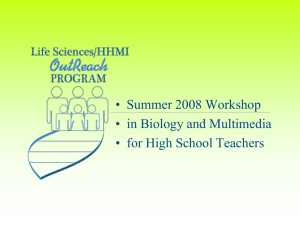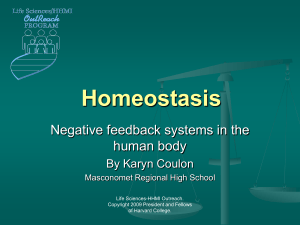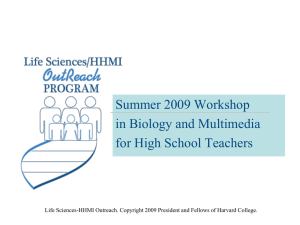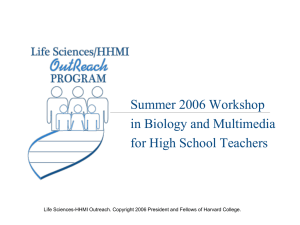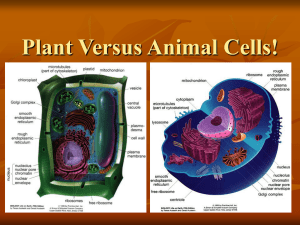Physiology of Flagella - Life Sciences Outreach at Harvard University
advertisement
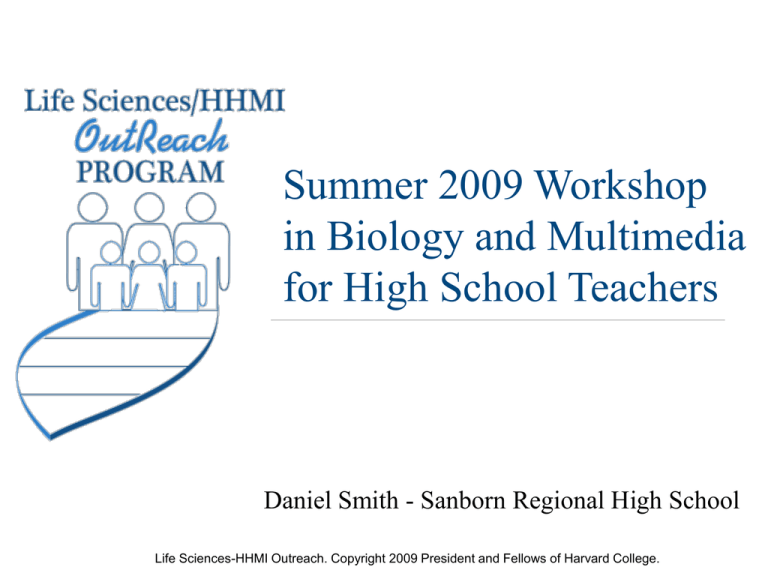
Summer 2009 Workshop in Biology and Multimedia for High School Teachers Daniel Smith - Sanborn Regional High School Life Sciences-HHMI Outreach. Copyright 2009 President and Fellows of Harvard College. Physiology of Flagella in Bacterial Movement Life Sciences-HHMI Outreach. Copyright 2009 President and Fellows of Harvard College. http://upload.wikimedia.org/wikipedia/commons/0/08/Flagella.png Life Sciences-HHMI Outreach. Copyright 2009 President and Fellows of Harvard College. Flagella - semi rigid structure used to move rod shaped microbial cells Rod shaped bacillus http://en.wikipedia.org/wiki/File:Average_prokaryote_cell-_en.svg Life Sciences-HHMI Outreach. Copyright 2009 President and Fellows of Harvard College. Structure • Flagella composed of protein polymer Flagellin • Attaches to cell membrane with Hooks and Basil Bodies at the Cell Membrane • Flagella rotates like a screw using proton motor force http://en.wikipedia.org/wiki/File:Flagellum_base_diagram_en.svg Life Sciences-HHMI Outreach. Copyright 2009 President and Fellows of Harvard College. Common Forms • A-Monotrichous; One flagella at one cell Pole • B-Lophotrichous; Multiple flagela at one cell pole • C-Amphitrichous; One flagella at each cell pole • D-Peritrichous; Several flagella at multiple locations on cell http://commons.wikimedia.org/wiki/File:Flagella.png Life Sciences-HHMI Outreach. Copyright 2009 President and Fellows of Harvard College. Direction of movement Runs and Tumbles • To move forward flagella rotates Counterclockwise propelling cell body with the tail following behind • When flagella rotates Clockwise forward motion stops and cell tumbles Life Sciences-HHMI Outreach. Copyright 2009 President and Fellows of Harvard College. Flagella helps cell interact with it’s Environment Run counter clockwise rotation • Bacteria behave or Nutrients light O2 respond to their environment depending upon Tumble clockwise rotation various stimuli such as Waste chemicals O2 chemicals, light or oxygen. Life Sciences-HHMI Outreach. Copyright 2009 President and Fellows of Harvard College. Behavior stimulus types • Chemotaxis: Moving towards helpful chemicals such as nutrients or away from chemicals such as waste or harmful chemicals • Phototaxis: Moving towards light • Aerotaxis: Moving towards or away from Oxygen Life Sciences-HHMI Outreach. Copyright 2009 President and Fellows of Harvard College. Receptor molecules near surface of membrane detect environmental conditions and transfer signals to flagella motor making it turn counter clockwise or clockwise. Turning speed can be influenced by concentration gradient. Receptors *Receptors may be related to transfer molecules Life Sciences-HHMI Outreach. Copyright 2009 President and Fellows of Harvard College. Bacteria are relatively Fast Organism Speed Body lengths Cheetah 111 km/hr 25 Human 37 km/hr 5.4 Bacteria .00015 km/hr 10 Life Sciences-HHMI Outreach. Copyright 2009 President and Fellows of Harvard College. Flagella are sophisticated structures that require the interaction of many different finely tuned systems that allows the organism to survive http://en.wikipedia.org/wiki/File:Flagellum_base_diagram_en.svg Life Sciences-HHMI Outreach. Copyright 2009 President and Fellows of Harvard College. Resources: http://en.wikipedia.org/wiki/Flagellum http://en.wikipedia.org/wiki/Bacterium http://en.wikipedia.org/wiki/Microorganism http://en.wikipedia.org/wiki/Bacterial_cell_structure Microbiology: Tortolla P 83-85 Life Sciences-HHMI Outreach. Copyright 2009 President and Fellows of Harvard College.
